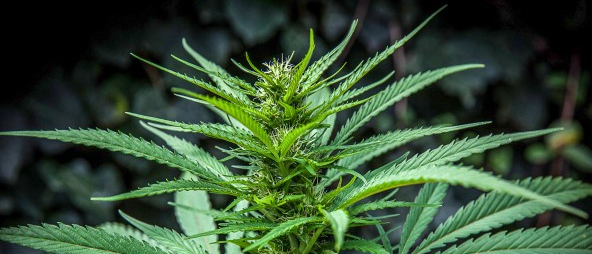The Marijuana Report: If we can see the difference, why can’t we speak the difference?
The green tubes in the picture above contain a cannabinoid, one of more than 100 components scientists have identified in the marijuana plant. This particular cannabinoid is cannabidiol (CBD), or Epidiolex, which GW Pharmaceuticals extracts from the marijuana plant, purifies, and mixes in oil to treat children with rare forms of epilepsy. Some 98% of this medicine is CBD with trace amounts of other cannabinoids, including less than 0.2% of THC, the cannabinoid that produces a “high.” Epidiolex is in FDA clinical trials in the US and is expected to be approved soon. If it is, doctors will be able to prescribe it for children who suffer intractable seizures. No laws will need to be changed.
Pictured below Epidiolex is a marijuana plant. Add another 400 chemical components to the cannabinoids it contains. Few have been studied. Legalization advocates, and marijuana growers, processors, and distributors who stand to make fortunes, have convinced most Americans that this whole plant is medicine, or “medical marijuana.”

But the promise for medicine lies in the plant’s cannabinoids, not the whole plant itself. That promise is being investigated by scientists who are studying cannabinoids in test tubes or in animals but, with rare exceptions, not yet in humans. That hasn’t stopped legalization advocates from claiming that the whole marijuana plant itself can produce a result in humans that a specific cannabinoid has produced in a test tube. But a test tube result is not a fact; it’s an indication that a scientist should take the next step in the research process. And a finding that a single cannabinoid has a specific effect in a test tube cannot be applied to the whole marijuana plant consumed by a human.
At the 2015 annual meeting of the National Association for the Advancement of Science (NAAS) last Saturday, researchers conducted a symposium titled “Cannabis and Medicine: A New Frontier in Therapeutics.” According to materials promoting the symposium and press accounts of it, the researchers used the terms “medical marijuana” and cannabinoids interchangeably, an odd thing for scientists, for whom precision matters, to do.
One, Dr. Igor Grant of the University of California, San Diego, asserted, “‘There is no evidence for long-term damaging effects [of marijuana use] in adults,’” according to an account of the symposium written for Science Magazine, the publication of the NAAS. “Preliminary data linking marijuana use to an increased risk of schizophrenia have not been supported by further studies.”
That was Saturday. Yesterday, The Lancet published a study by 23 scientists who found that daily use of high-potency marijuana (about 16% THC and no CBD) quintupled the risk of developing a schizophrenic-like psychosis and weekend use tripled the risk among people ages 18 to 65. A major finding of the study is that potency and frequency of use are critical to determining the effect of marijuana on mental health, factors, according to one report, that are often overlooked by doctors.
Ironically underscoring the need to be precise in our language is a dispute reported today in Oregon where medical marijuana growers have asked a legislator for a bill that will ban the growing of hemp in counties with large medical-marijuana grows. They fear hemp will pollinate their high-THC marijuana and turn it into low-grade, 60s pot. “It basically makes the medicine worthless,” one grower said.
Click here to read an account of the NAAS marijuana symposium.
Click here to read an account of The Lancet study.
Click here to read The Lancet study itself.
Click here to read the Oregon story.
ABOUT THE MARIJUANA REPORT:
The Marijuana Report.Org is published by the Marijuana Studies Program, a project of National Families in Action and its partners. The report is a news aggregator website that links browsers to daily news coverage of the marijuana issue. A one-page e-newsletter highlights key issues for subscribers each week. We are grateful to Monte Stiles, Derek Franklin, the Washington Association for Substance Abuse and Violence Prevention, and others who contribute stories to this website.


